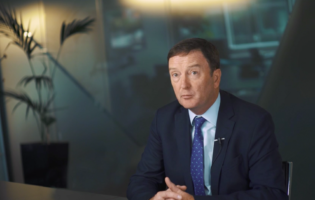Investment Outlook - Market Update

This time last year, we forecast that for 2022 and beyond, previously market-friendly central banks would become the foe of markets, that a material ‘regime shift’ for monetary policy worldwide was in the offing and that a very different environment from what investors had experienced over the previous decade lay ahead. In the event, 2022 turned out to be a very challenging one as markets struggled to cope with war, inflation, and rapidly rising interest rates. Looking into the new year, we believe many of these headwinds are likely to persist.
While coping with a difficult geo-political environment, 2022 saw a material rotation within equity markets. A rotation from liquidity and momentum related growth stocks and sectors to more fundamentally based value and defensive stocks. A ‘regime shift’ from growth stocks that ‘promised’ growth in the future to more attractively priced value stocks that are already earning and paying out profits and which typically do well in inflationary times. This tug-of-war between the winners and losers may well continue into 2023, but as with 2022, we expect that patience and fundamentals will win out. We predict this while noting that some former growth darlings now find themselves in the value camp!
While more optimistic commentators are pointing to the year ahead being one of recovery with lower inflation and interest rates, we at KBI remain less sanguine. While natural to expect that at some point macro conditions will allow central banks to begin easing again, that this is unlikely to be the case during 2023. We rather point to the continued ‘robustness and resilience’ in economic growth, inflation, and labour market strength and therefore not an environment for material policy change by central bankers. Our expected environment is for stubborn core inflation (as distinct from drops in headline inflation), higher interest rates and eventually lower economic growth.
We note the current market consensus is for a 2023 recession, arguably the most anticipated ever, with the only debate amongst economists being as to how soft or hard the landing will be! For global earnings growth consensus expect +3% for 2023. We continue to expect the eventual number to be more like minus 10%. Against this background, equity and bond markets will, we believe, continue to struggle and volatility will remain high.
The KBI investment team remain vigilant, focusing on both our top-down macro analysis and in particular a focus on bottom-up company analysis. While expecting the global market environment to remain uncertain and volatile, we will maintain a focus on building balanced portfolios with a mindset towards downside protection, as was the case during 2022.
Asset class outlook:
Equities
At an aggregate valuation level, having fallen materially during 2022, equity market valuations are much cheaper than a year ago, and are now much closer to and in some cases cheaper than historic averages. The outlook for both European and Emerging Market equities may well be brighter through 2023.
As highlighted in previous quarterly updates, stock and sector winners have themselves been volatile from quarter to quarter as the market has ‘flip-flopped’ between its own optimistic and pessimistic moods. Looking ahead, we believe that while top-down has dominated much of the market behaviour over recent quarters, that bottom-up company performance will be once again the material driver of performance over coming quarters. This market environment should continue to reward active portfolio management
We believe that the rotation that started 12 months ago, favouring stocks underpinned by strong fundamentals and less dependent on ‘hope’ is likely to continue. In an environment of higher nominal interest rates and inflation, attractively valued, higher-yielding equities with attractive dividend growth prospects become very appealing, as do companies who have the attributes of more secular than cyclical growth. We will continue to build balanced portfolios focusing on these attributes.
Bonds
Bonds as an asset class have experienced their worst year since 2008. The combination of higher inflation, higher interest rates and less supportive Central Banks all impacting. On top of this governments have become more fiscally supportive of economies, thus increasing supply. Despite a challenging year, we believe bonds remain relatively poor value and while yields have risen materially, they have done so from historically low levels and may rise further as inflation remains stubborn and interest rates continue to rise.
While much focus has been on Government bond yields, we also monitor corporate bond markets for any signs of distress at a company or indeed sectoral level, as the cost of funding is increasing sharply.




